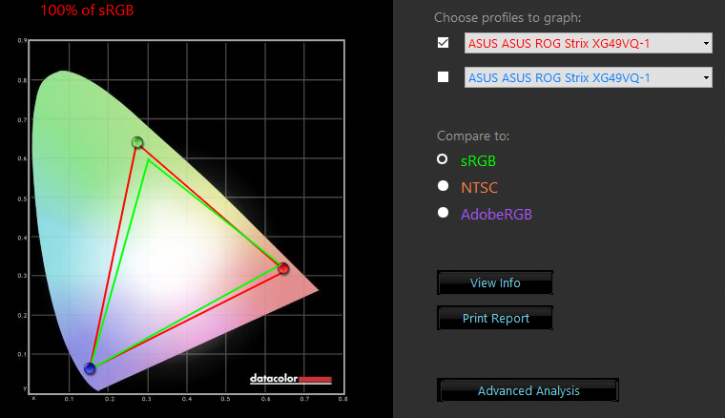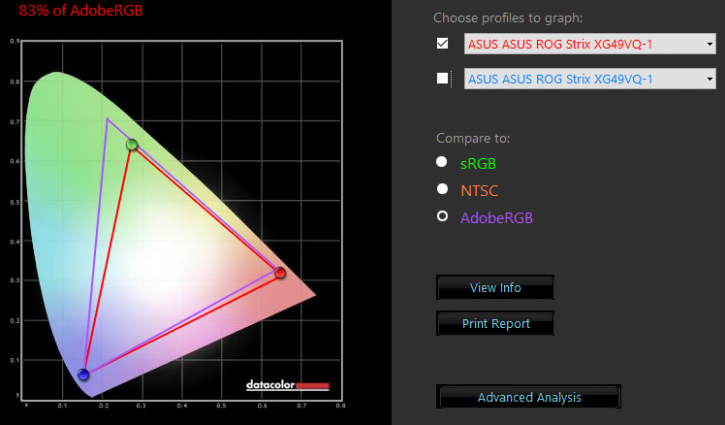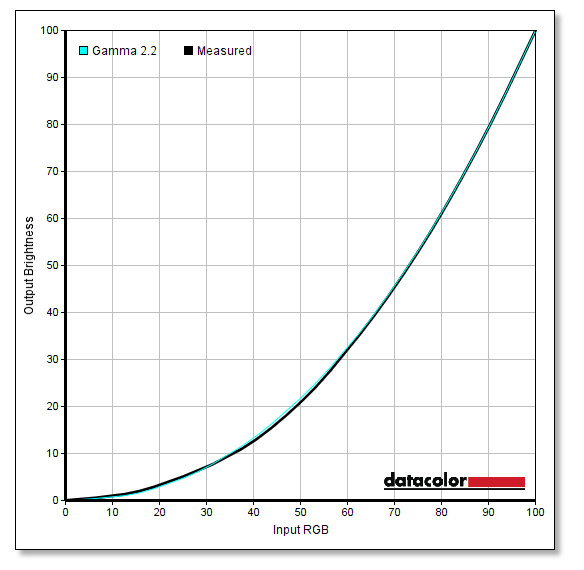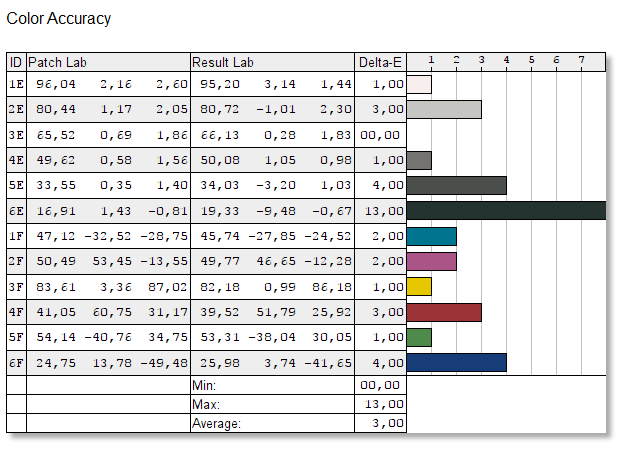Color Accuracy and Gamma
Color space and screen uniformity
We start our tests by measuring color space and screen uniformity. Uncalibrated performance means the out-of-the-box settings a monitor ships with. Calibrated performance is what results after the monitor has been put through our calibration process. Our target with calibration is to be at Gamma of 2.2 with a target 6500k color temperature and a 90cd/m2 brightness. Luminance is candela per square meter (cd/m2) also described as 'nits'.
The screen has is an HDR panel and meets the requirement of a larger color space. We selected the screen sRGB mode. The color box you see below is the color gamut, a color gamut defines a more specific range of colors from the range of colors identifiable by the human eye (i.e., the visible spectrum). Various standards govern color gamuts. The two most common standards frequently cited in relation to personal computers are sRGB and Adobe RGB.
For our first baseline test in the default gamut (sRGB) mode, we reach 100% of the sRGB color gamut, which is really good. However our software reports '100%. The color space, however, is the green triangle, and the monitor clearly offers a wider gamut. We have no doubt it reaches the advertised 125%
So once we measure wide color gamut and test/compare with an AdobeRGB gamut, we retrieve an 83% of AdobeRGB. The AdobeRGB color space is comparable to a DCI-P3. That could have been a notch better.
Gamma
These monitors come factory calibrated for you, the next tests will back that fact. The average gamma value is also good with a measured deviation of 0.01 from 2.2
Gamma uncalibrated was spot on at 2.2, there is an allowance deviation of 10%, so that is near really good. Of course, you are free to alter and tweak anything to your liking yourself. The monitor allows several gamma modes.
From a practical perspective, the average human eye cannot detect any color differences with a Delta-E value of 3 or less, and an exceptionally trained and sensitive human eye will only be able to perceive color differences with a Delta-E of 1 or above. The monitor is average bit remains spot on at its advertised △E<3 average.






